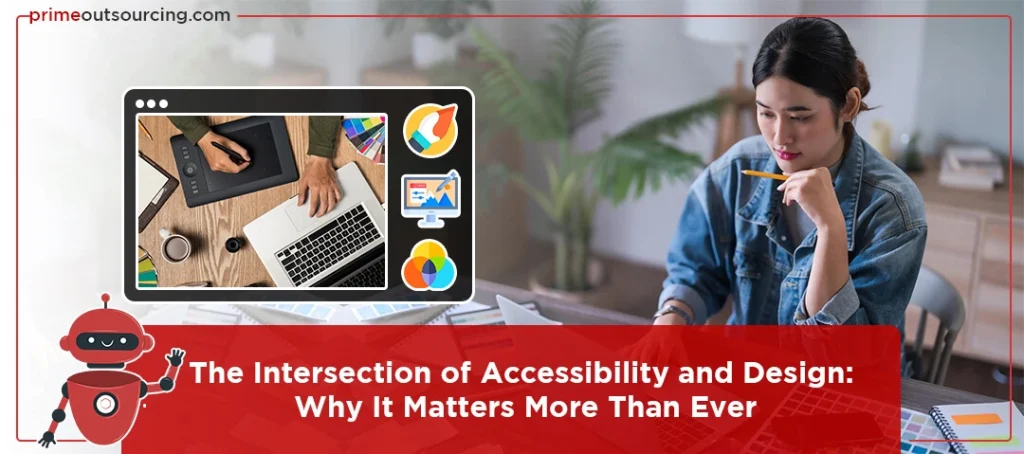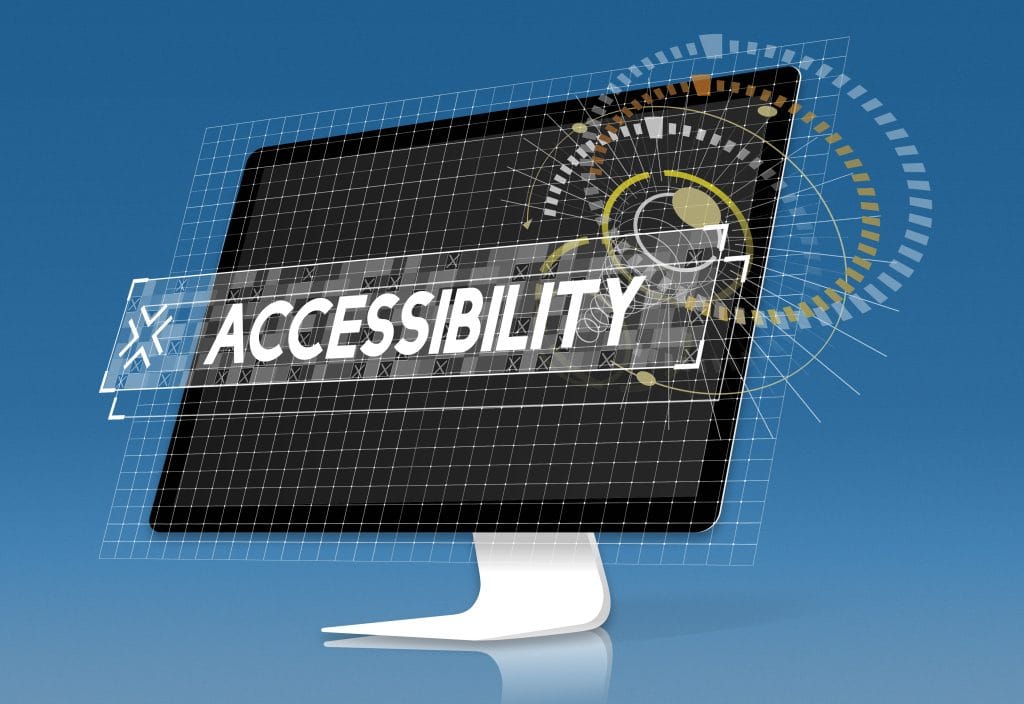
Accessibility and design should coexist. Not everyone interacts with technology the same way. The spectrum of human ability is vast and varied, and the way digital design is perceived is different. A design isn’t truly good and effective unless it’s accessible.
Accessibility in design is a human responsibility. As digital platforms become central to how we work, learn, shop, and connect, inclusive design should be applied. Accessibility is no longer optional; it’s a bridge between innovation and empathy.
In this blog, we’ll tackle why accessibility and design must intersect, the benefits that a combined effort brings to individuals and businesses, and the steps involved in creating comprehensive experiences.
Why Accessibility Is More Than Compliance
Accessibility is frequently misinterpreted as a legal requirement, when in fact it’s about creating inclusive, meaningful experiences for every user.
- It’s about dignity: People who have impairments can interact with tools, services, and content on their own through accessible design.
- It’s about usability for all: Not only can features like voice commands, larger fonts, and easier navigation help those with impairments, but they also help older individuals, multitaskers, and those in low-bandwidth environments.
- It’s about reach: More than 1 billion individuals worldwide live with a disability. A significant percentage of your potential audience will be excluded if you overlook accessibility.
Accessibility isn’t just ethical and considerate—it’s strategic.

Design That Includes: Principles of Inclusive UX
Designing with accessibility in mind doesn’t mean sacrificing creativity. In reality, it often leads to cleaner, more intuitive interfaces. Below are the key principles that guide inclusive design:
1. Clarity Over Complexity
Minimalist design isn’t just trendy and simple—it’s functional. Clear labels, consistent layout, and easy navigation help users find what they are looking for.
2. Color Contrast and Readability
Designers are more into subtle palettes, but low contrast can be a challenge for users with visual impairments. Tools like Web Content Accessibility Guidelines or WCAG, help ensure text is readable and comprehensible against backgrounds.
3. Keyboard Navigation
Not everyone likes to use a mouse for navigation. Making sure that your site or app can be navigated via keyboard is essential.

4. Alt Text and Semantic HTML
For content interpretation, screen readers depend on appropriate
5. Responsive and Adaptive Design
Designing for various screen sizes and devices is another aspect of accessibility. A responsive layout guarantees a smooth experience for consumers on desktop, tablet, and mobile devices.
The Business Case for Accessible Design
Being accessible is not only required by regulation, but it is also a wise business decision.
- Wider Audience Reach: Your consumer base naturally grows when you make your product accessible. By designing for accessibility, you step into the underserved markets and broaden your customer base.
- Better SEO: Search engines prefer accessible websites because they have cleaner code, better structure, and more descriptive content. Accessible websites often rank higher in search engines due to cleaner code and better structure.
- Brand Reputation: Businesses with a reputation for being inclusive gain the loyalty and confidence of their customers. Businesses that prioritize inclusivity build trust and emotional connection with their audience.
- Reduced Bounce Rates: Accessible sites are easier to navigate, which keeps users engaged longer.
In addition to causing exclusion, neglecting to design for accessibility results in income loss.

Accessibility Isn’t Optional—It’s Essential
An entire population is excluded when websites, apps, or products are inaccessible; this might happen unintentionally, but the consequence is always the same—dissatisfaction, alienation, and missed opportunities.
The World Health Organization estimates that more than 1.3 billion people worldwide are disabled. This is a sizable fraction of the world’s population; therefore, it’s barely an insignificant segment.
The goal of accessibility is to design for all individuals in all circumstances, not only for those with disabilities.

Common Accessibility Pitfalls in Design
Not all designers are perfect; even the most skilled designers can fall into traps that make products less accessible. Here are some examples:
- Color-Dependent Communication: Using only colors to indicate statuses can result in confusing users who are color-blind. For example, “fields in red are required.”
- Poor Contrast Ratios: Although light gray lettering on a white background may appear elegant, many users can have trouble reading it.
- Missing Alt Text: Without descriptive text for images, screen reader users lose important messages.
- Small Clickable Areas: Buttons or links that are too small to utilize are bothersome for users who use touch devices.
- Overly Complex Navigation: Complicated menus can be challenging for users with cognitive impairments to understand or navigate.
It takes both technical expertise and consideration for the user’s experience to avoid these issues.

Accessibility Guidelines Every Designer Should Know
The Web Content Accessibility Guidelines (WCAG) are an excellent place to start when designing for accessibility. Four guiding concepts form the foundation of these standards: the material must be robust, understandable, operable, and perceivable.
Among the crucial procedures are:
- For normal text, make sure the contrast ratio is at least 4.5:1.
- All interactive elements should have keyboard navigation available.
- Make sure your information is organized logically with clear headings.
- For non-text items, include alt text and descriptive labels.
- Create layouts that are responsive to many devices and orientations.
Integrating these guidelines into your design approach makes accessibility a priority rather than a secondary consideration.

The Emotional Impact of Accessible Design
Not only is accessibility technical, but it is also intensely emotional. It’s more than just convenience when a product can be used by anyone without any difficulties. These are moments that change lives, not just design accomplishments.
When accessibility and design intersect, we establish sites or applications that are not only functional and pleasing but also empowering.

Let’s Build a More Inclusive Digital World Together
The world is continuously progressing—why not make something for the betterment of everyone? If your business is ready to embrace accessibility and deliver excellent design, PrimeOutsourcing can help you soar high.
Let’s design something with purpose. Send us a message to start building accessible and impactful designs that can make a difference.

